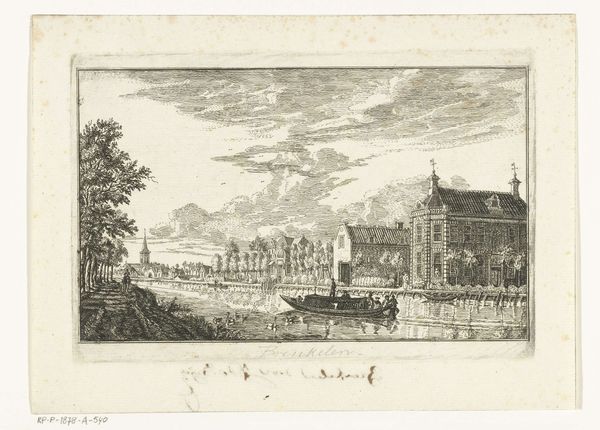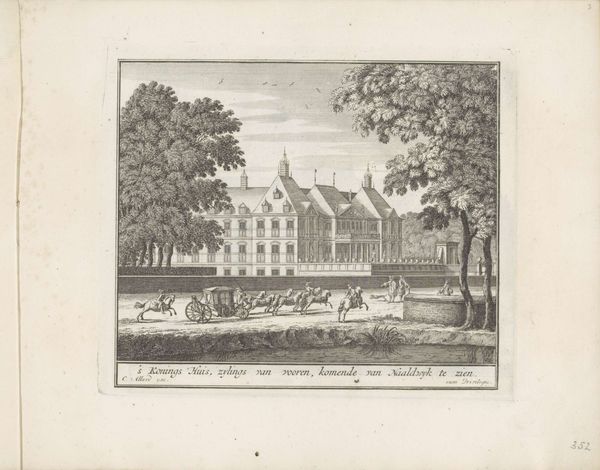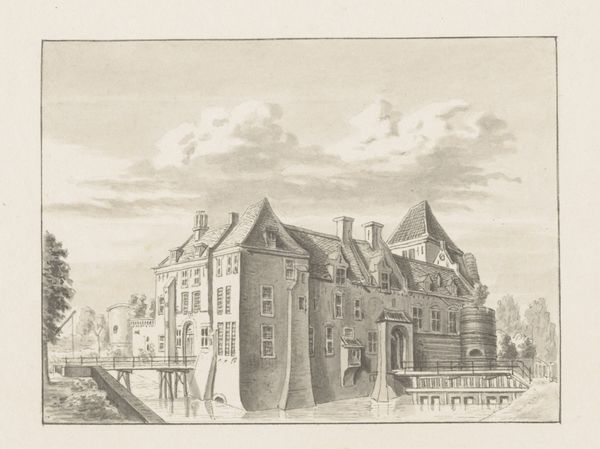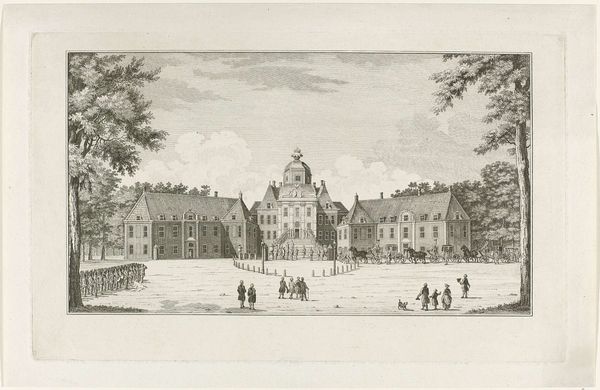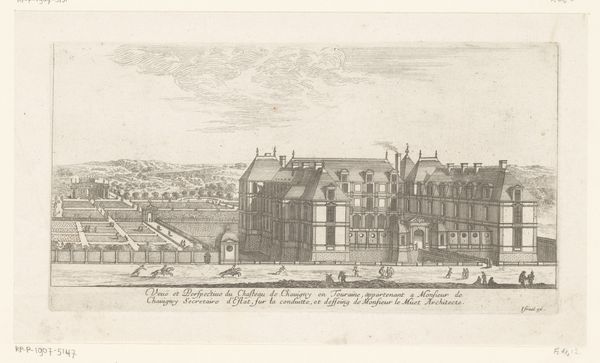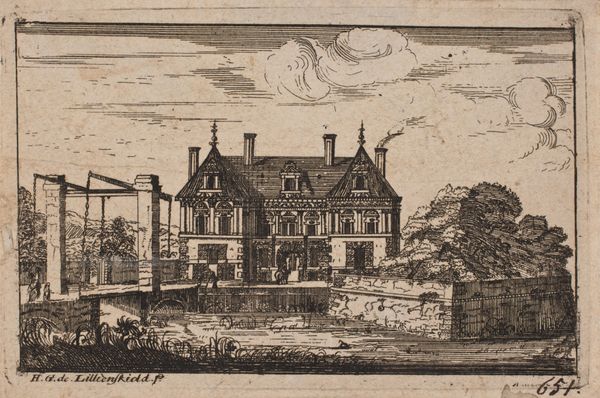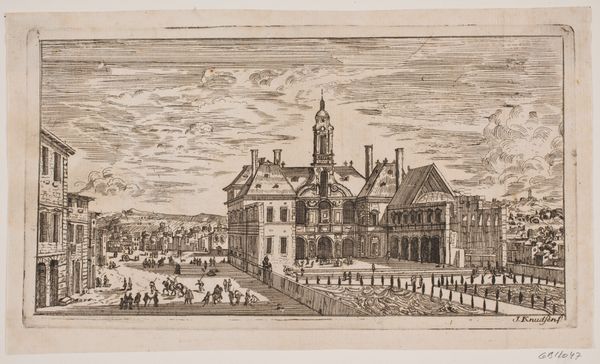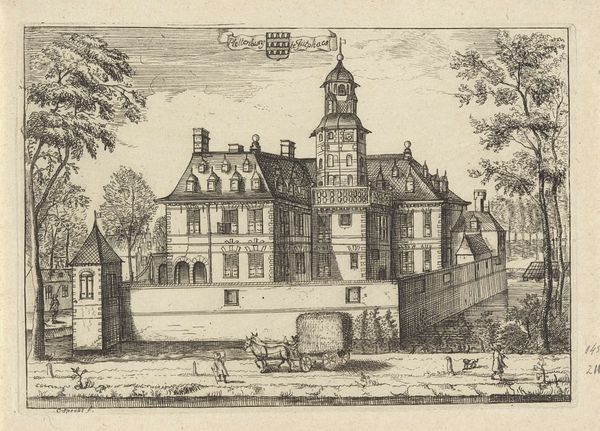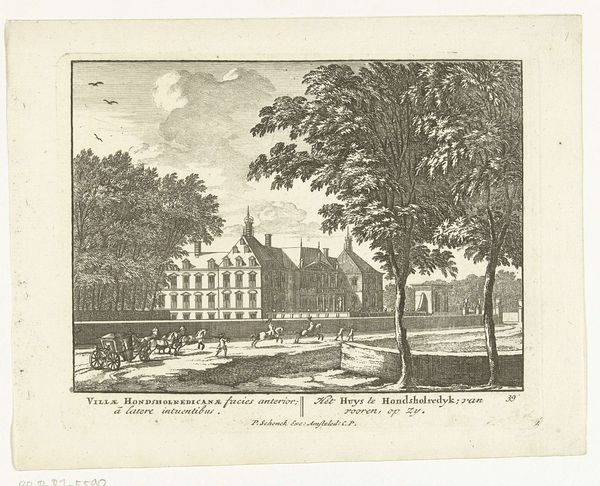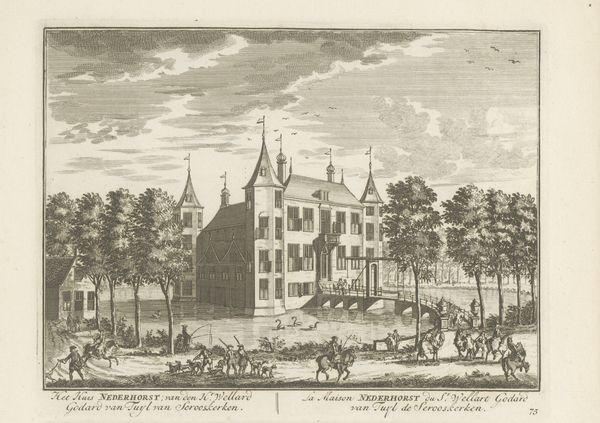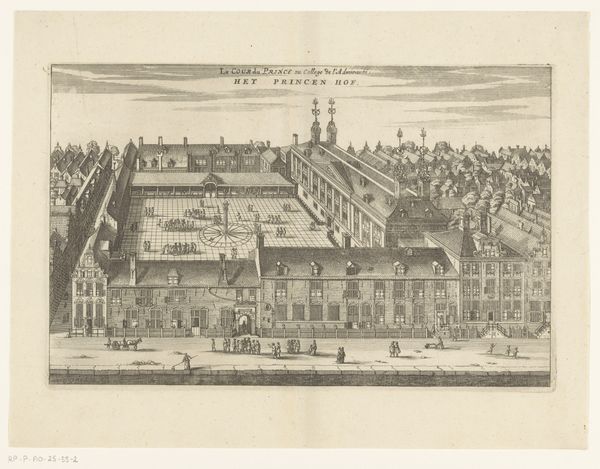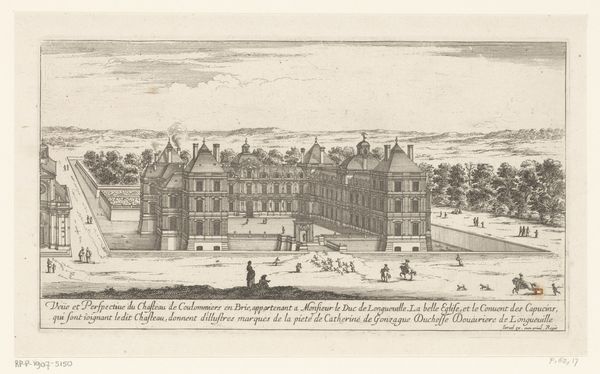
print, engraving
#
baroque
#
dutch-golden-age
# print
#
landscape
#
cityscape
#
history-painting
#
engraving
Dimensions: height 140 mm, width 215 mm
Copyright: Rijks Museum: Open Domain
Editor: This is "Gezicht op Kasteel Nederhorst in Nederhorst den Berg," an engraving by Jan de Beijer, dating sometime between 1713 and 1780. I find its perspective a bit strange; the castle seems imposing yet slightly…off, like a stage set. What strikes you most about it? Curator: It's intriguing, isn't it? Beyond the picturesque facade, consider what this image is *doing*. These Dutch Golden Age landscapes, while seemingly objective, are deeply embedded in power structures. Who commissioned this print? Who was it intended for? Editor: Probably wealthy landowners wanting to show off their estates? Curator: Exactly! This isn't just a pretty picture; it's a visual assertion of dominance, a claim to land and resources. The idealized depiction subtly erases the labor and the social inequalities that enabled such grandeur. The castle stands as a symbol of privilege, rendered palatable through artistic convention. Notice how the figures in the foreground seem almost incidental, dwarfed by the architecture? Editor: I see what you mean. They're just…observers in someone else's story. So even a landscape can be political? Curator: Absolutely. The choice of perspective, the emphasis on architectural detail, the exclusion of any dissenting narrative… all contribute to a carefully constructed ideology. Ask yourself, whose story is being told here, and whose is being left out? Editor: That's a really interesting way to look at it. I initially just saw a nice drawing of a castle. Curator: Seeing the layers of meaning beneath the surface can transform our understanding, even of seemingly straightforward images. The past always speaks to the present, if we listen closely.
Comments
No comments
Be the first to comment and join the conversation on the ultimate creative platform.
